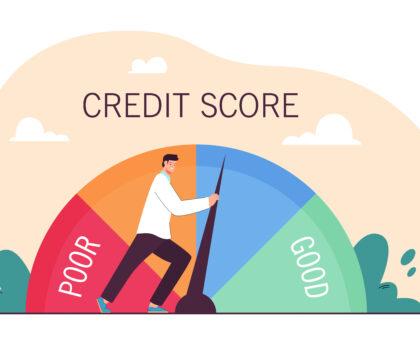Introduction:
Debt can weigh heavily on our financial well-being and limit our ability to achieve financial freedom. However, with the right strategies and mindset, it is possible to pay off debt and regain control of your finances. In this comprehensive guide, we will explore smart ways to pay off debt, empowering you to take steps towards achieving financial freedom. From prioritizing debt repayment to exploring consolidation options, we will provide detailed insights and practical tips to help you become debt-free. Let’s dive in and embark on a journey towards a debt-free and financially secure future.
Table of Contents:
- The Impact of Debt on Financial Freedom
- Assessing Your Debt Situation
- Creating a Debt Repayment Plan
- Prioritizing Your Debts
- Implementing the Debt Snowball Method
- Exploring the Debt Avalanche Method
- Consolidating Your Debts
- Negotiating with Creditors and Seeking Professional Help
- Cutting Expenses and Increasing Income
- Creating a Realistic Budget
- Building an Emergency Fund
- Staying Motivated and Tracking Progress
- Avoiding Debt Relapse and Maintaining Financial Discipline
- Celebrating Milestones and Rewarding Yourself
- Conclusion
- The Impact of Debt on Financial Freedom: Debt can have a significant impact on our financial freedom. It can limit our ability to save, invest, and pursue our goals and dreams. Understanding the consequences of debt motivates us to take action and regain control of our financial lives.
- Assessing Your Debt Situation: Assessing your debt situation involves gathering all the necessary information about your debts. Make a list of all your debts, including credit cards, personal loans, student loans, and any other outstanding obligations. Note down the interest rates, minimum payments, and total outstanding balances for each debt. This assessment provides a clear overview of your debt landscape, allowing you to develop an effective repayment plan.
- Creating a Debt Repayment Plan: A debt repayment plan serves as your roadmap to becoming debt-free. Consider factors such as your total debt amount, income, and monthly expenses. Determine how much you can allocate towards debt repayment each month while still meeting your essential needs. With a well-crafted plan, you’ll have a clear strategy in place to guide your debt repayment journey.
- Prioritizing Your Debts: Prioritizing your debts is crucial to make the most impact on reducing your overall debt burden. Consider factors such as interest rates, balances, and any other relevant considerations. High-interest debts should generally be prioritized for faster repayment, as they tend to cost you more in the long run. By strategically allocating your resources towards your highest-priority debts, you’ll be able to make significant progress in your debt repayment journey.
- Implementing the Debt Snowball Method: The debt snowball method is a debt repayment strategy that involves paying off debts from smallest to largest, regardless of interest rates. Start by making minimum payments on all debts and put any extra money towards the smallest debt. Once the smallest debt is paid off, take the amount you were paying towards it and apply it to the next smallest debt. This method provides psychological motivation by allowing you to experience quick wins, helping to build momentum in your debt repayment journey.
- Exploring the Debt Avalanche Method: The debt avalanche method focuses on paying off debts based on interest rates, starting with the highest interest rate debt. Make minimum payments on all debts and allocate any extra funds towards the debt with the highest interest rate. Once that debt is paid off, move on to the next highest interest rate debt. This method saves money on interest payments in the long run and may be more cost-effective overall.
- Consolidating Your Debts: Debt consolidation is a strategy that involves combining multiple debts into a single loan or credit card with a lower interest rate. Consolidation can simplify your debt repayment process by merging multiple payments into one and potentially lower your overall interest costs. Explore options such as personal loans, balance transfer credit cards, or debt consolidation programs to find the best solution for your situation.
- Negotiating with Creditors and Seeking Professional Help: If you’re struggling to make payments, don’t hesitate to reach out to your creditors. They may be willing to negotiate new terms, such as lower interest rates, revised payment plans, or debt settlement options. If managing your debts becomes overwhelming, consider seeking professional help from credit counseling agencies or debt management companies. They can provide expert guidance, negotiate on your behalf, and help you create a customized repayment plan.
- Cutting Expenses and Increasing Income: To accelerate your debt repayment, evaluate your expenses and identify areas where you can cut back. Trim discretionary spending, reduce unnecessary subscriptions, and find ways to save on daily expenses. Additionally, consider ways to increase your income, such as taking on a side job, freelancing, or pursuing additional education or certifications. The combination of reducing expenses and boosting income can free up more money to put towards debt repayment.
- Creating a Realistic Budget: A realistic budget is a crucial tool for managing your finances and allocating funds towards debt repayment. Track your income and expenses diligently, ensuring that you allocate enough funds towards debt repayment while covering essential needs. Set realistic targets and make adjustments as necessary to stay on track with your budget. A well-planned budget provides visibility and control over your financial situation.
- Building an Emergency Fund: As you pay off debt, it’s important to simultaneously build an emergency fund. An emergency fund provides a safety net, protecting you from unexpected expenses or financial setbacks. Aim to save at least three to six months’ worth of living expenses in your emergency fund. This ensures that you have a buffer and won’t have to rely on credit cards or loans in times of financial need.
- Staying Motivated and Tracking Progress: Maintaining motivation is crucial throughout your debt repayment journey. Set milestones and track your progress regularly. Celebrate small victories along the way, such as paying off a specific debt or achieving a certain percentage of overall debt reduction. Visualize the benefits of becoming debt-free, such as financial freedom, reduced stress, and the ability to pursue your financial goals. Keeping a positive mindset and staying motivated will help you stay on course, even when faced with challenges.
- Avoiding Debt Relapse and Maintaining Financial Discipline: Once you’ve paid off your debts, it’s important to avoid falling back into debt. Develop healthy financial habits and maintain financial discipline. Avoid unnecessary credit card usage, practice mindful spending, and continue to live within your means. Set financial goals for the future, such as saving for a down payment, investing for retirement, or starting a business. By staying disciplined and prioritizing your financial well-being, you can maintain your debt-free status and continue on the path to long-term financial freedom.
- Celebrating Milestones and Rewarding Yourself: Recognize and celebrate milestones in your debt repayment journey. As you achieve significant goals, such as paying off a substantial debt or reaching a specific percentage of overall debt reduction, take the time to celebrate your achievements. Reward yourself within reason, whether it’s treating yourself to a small indulgence or taking a well-deserved break. Celebrations and rewards provide positive reinforcement, keep your motivation high, and remind you of the progress you’ve made.
Conclusion: Paying off debt and achieving financial freedom is an empowering journey that requires commitment, discipline, and smart strategies. By assessing your debt situation, creating a repayment plan, prioritizing debts, implementing effective methods like the debt snowball or avalanche, exploring consolidation options, cutting expenses, increasing income, creating a realistic budget, building an emergency fund, staying motivated, and maintaining financial discipline, you can make significant progress towards becoming debt-free. Remember that each step you take brings you closer to the financial freedom and peace of mind you desire. Stay focused, persevere through challenges, and embrace the rewarding journey of becoming debt-free.





